
Money is one of those things we use everyday, we see it, we touch it, we feel it, and we certainly know how to spend it.
But, do you know what money is made of?
If not, here are two tables that break down the composition of both American and Canadian money.
What is American Money Made Of?
| American Money | Composition |
| Penny | 97.5% Zinc, 2.5% Copper |
| Nickel | 75% Copper, 25% Nickel |
| Dime | 91.67% Copper, 8.33% Nickel |
| Quarter | 91.67% Copper, 8.33% Nickel |
| Half Dollar | 91.67% Copper, 8.33% Nickel |
| Dollar Coin | 88.5% Copper, 6% Zinc, 3.5% Manganese, 2% Nickel |
| Paper Money | 75% Cotton, 25% Linen |
So the American penny consists of zinc and copper. All other coins with the exception of the dollar consist of some combination of copper and nickel. While the dollar coin consists of copper and nickel as well, it also contains zinc and manganese.
What is Canadian Money Made Of?
| Canadian Money | Composition |
| Penny | 94% Steel, 1.5% Nickel, 4.5% Copper |
| Nickel | 94.5% Steel, 3.5% Copper, 2% Nickel |
| Dime | 92% Steel, 5.5% Nickel, 2.5% Copper |
| Quarter | 94% Steel, 3.8% Nickel, 2.2% Copper |
| Loonie | Steel, Brass Plating |
| Toonie | Steel, Nickel Plating, Aluminum Bronze, Brass Plating |
| Paper Money | Polymer |
So Canadian coins valued under $1 are composed of some combination of steel, nickel and copper. The Canadian loonie is made with brass plated steel and the toonie contains nickel plated steel with brass plated aluminum bronze filling the inner core. Finally, Canadian paper money is printed on a soft, durable material called polymer.
Quick Note #1 – These compositions are based on the most recent changes. These percentages and elements have changed over the years and have not always been what you see above.
To learn more about historical compositions of money, keep reading.
What is American Money Made Of?
Penny ($.01 USD)
In 1857, the US government abolished the half cent, which made the American penny the new lowest value coin available.
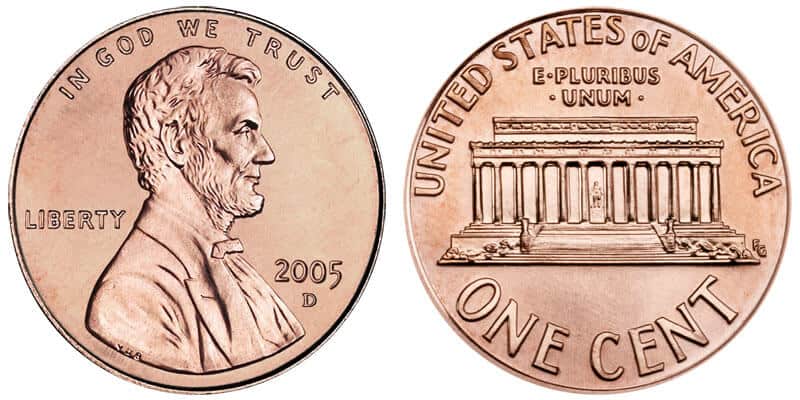
The first American penny, produced in 1787, was made with primary copper.
Currently though, the American penny is composed of 97.5% zinc and 2.5% copper.
Historical Composition of the American Penny
| Years | Composition |
| 1982–present | 97.5% zinc, 2.5% copper |
| 1962–1982 | 95% copper, 5% zinc |
| 1947–1962 | 95% copper, 5% tin and zinc |
| 1944–1946 | 95% copper, 5% zinc |
| 1943 | zinc-coated steel |
| 1864–1942 | 95% copper, 5% tin and zinc |
| 1856–1864 | 88% copper, 12% nickel |
| 1795–1857 | 100% copper |
| 1793–1795 | 100% copper |
Nickel ($.05 USD)
The American nickel, what can be said about this coin.
No seriously, what can be said about this coin? I have no idea, it’s a pretty boring coin if you ask me. Why don’t we just give you the information you want.

The American nickel is composed of 75% copper and 25% nickel.
Historical Data for the American nickel was not found unfortunately.
Dime ($.10 USD)
The official American dime was introduced in 1796 and it has only seen 3 composition changes in the last 200 plus years.
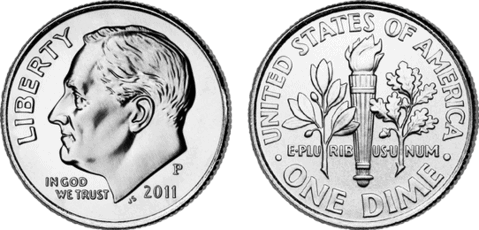
Currently, the American dime is composed with 91.67% copper and 8.33% nickel.
Historical Composition of the American Dime
| Years | Composition |
| 1965–Present | 91.67% Copper, 8.33% Nickel |
| 1837- 1965 | 90% Silver, 10% Copper |
| 1796 – 1837 | 89.24% Silver, 10.76% Copper |
Quarter ($.25 USD)
The American quarter was first introduced to America just a few years ago….. 1796 to be exact.
Similar to the dime, the American quarter has a composition of 91.67% copper and 8.33% nickel.
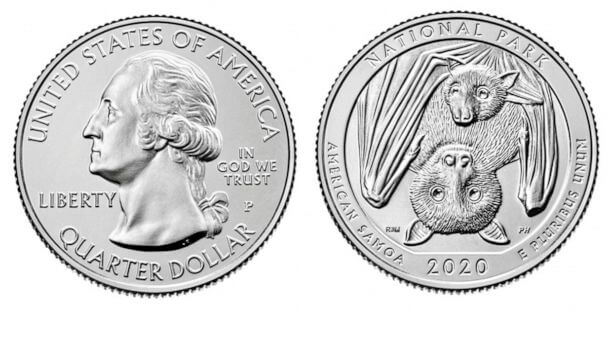
However, from 1932-1934, the American quarter was made with 90% Silver and just 10% copper.
Half Dollar ($.50 USD)
The US Mint stopped producing half dollar coins for general circulation back in 2002.
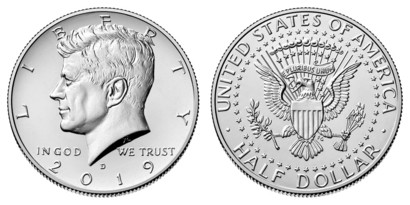
While these coins are typically only used for collectors nowadays, they still occasionally find their way into general circulation.
From 1971 to 2002, when the coin stopped being produced, the half dollar coin was composed of 91.67% copper and 8.33% nickel.
Historical Composition of the American Half Dollar Coin
| Years | Composition |
| 1971– 2002* | 97.67% Copper, 8.33% Nickel |
| 1965-1970 | 60% Copper, 40% Silver |
| 1964 | 90% Silver, 10% Copper |
| Prior to 1964 | Unknown |
Dollar Coin ($1.00 USD)
Similar to the half dollar, the United States Mint stopped producing American dollar coins back in 2011.
Any American dollar coins that you see dated 2012 or later are meant solely for coin collectors.
While I was unable to get the full history of this coin’s composition, I do know that at the time it stopped being produced the American dollar coin was made with 88.5% copper, 6% zinc, 3.5% manganese and 2% nickel.

American Paper Money (USD)
American paper money is manufactured by The Bureau of Engraving and Printing (BEP) and is currently made in denominations of $1, $2, $5, $10, $20, $50, and $100.
Fun Fact – Although the United States doesn’t produce paper money in larger denominations like they used to, ($500, $1,000, $5,000, and $10,000), these bills are still fully valid – as long as they were issued after 1861.
Okay, so what is American paper money made of?
According to the Bureau itself, the United States currency paper is composed of 75% cotton and 25% linen.
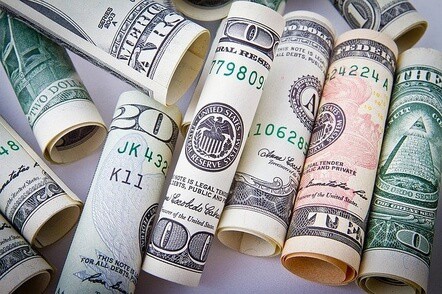
What is Canadian Money Made Of?
Penny ($.01 CAD)
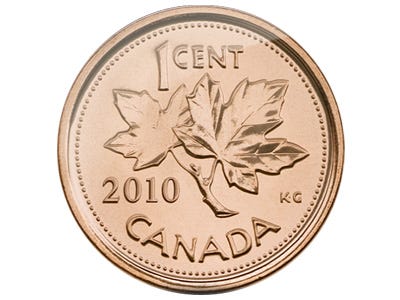
The Canadian penny had a good run, but as of 2012, the Royal Canadian Mint stopped distributing them.
Before they stopped being made, Canadian pennies were composed of 94% steel,1.5% Ni, 4.5% Cu plating.
Historical Composition Chart of the Canadian Penny
| Years | Composition |
| 2000–2012 * | 94% steel, 1.5% nickel, 4.5% copper plating |
| 1997–1999 | 98.4% zinc, 1.6% copper plating |
| 1982–1996 | 98% copper, 1.75% tin, 0.25% zinc |
| 1980–1981 | 98% copper, 1.75% tin, 0.25% zinc |
| 1978–1979 | 98% copper, 1.75% tin, 0.25% zinc |
| 1942–1977 | 98% copper, 0.5% tin, 1.5% zinc |
| 1920–1941 | 95.5% copper, 3% tin, 1.5% zinc |
| 1876–1920 | 95.5% copper, 3% tin, 1.5% zinc |
Nickel ($.05 CAD)

Unlike the penny, the Canadian nickel is still chugging along.
Similar to the penny though, the Canadian nickel was first minted in 1858 and has seen quite a change in terms of its composition over the years..
The Canadian nickel is made with 94.5% steel, 3.5% copper, 2% nickel plating
Historical Composition Chart of the Canadian Nickel
| Years | Composition |
| 2003–present | 94.5% steel, 3.5% copper, 2% nickel plating |
| 1999–2003 | 94.5% steel, 3.5% copper, 2% nickel plating |
| 1990–2001, 2006 | 75% copper, 25% nickel |
| 1982 – 1989 | 75% copper, 25% nickel |
| 1965–1981 | 99.9% nickel |
| 1953–1964 | Chrome plated steel (1953–1954) 99.9% nickel (1955–1964) |
| 1946–1952 | 99.9% nickel (1946–1951)Chrome plated steel (1951–1952) |
| 1942–1945 | 88% copper, 12% zinc (1942–1943)Chrome plated steel (1944–1945) |
| 1937–1942 | 99.9% nickel |
| 1922–1936 | 99.9% nickel |
| 1911–1921 | 92.5% silver, 7.5% copper (1911–1919)80% silver, 20% copper (1920–1921) |
| 1902–1910 | 92.5% silver, 7.5% copper |
| 1858–1901 | 92.5% silver, 7.5% copper |
Dime ($.10 CAD)
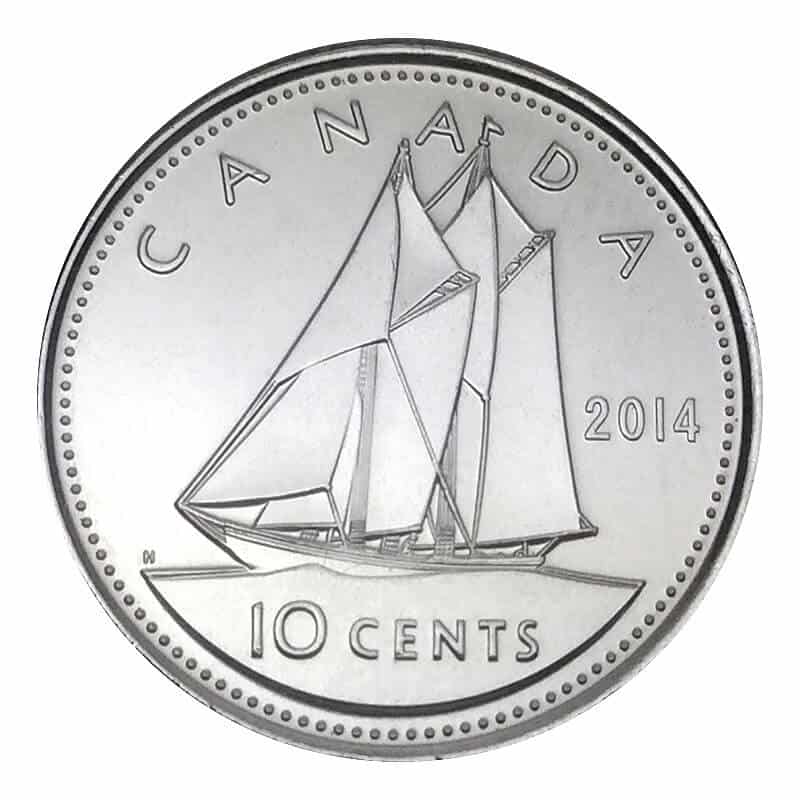
Ah yes, the Canadian dime, eh!
I have enough of these small little coins in my car to feed a small family.
Despite being the smallest Canadian coin, a dime is valued at $.10.
The Canadian dime is made with 92.0% steel, 5.5% copper, 2.5% nickel plating
Historical Composition Chart of the Canadian Dime
| Years | Composition |
| 2000–present | 92.0% steel, 5.5% copper, 2.5% nickel plating |
| 1979–1999 | 99.9% nickel |
| 1969–1978 | 99.9% nickel |
| 1968 | 99.9% nickel (172.5M)50% silver, 50% copper (70.4M) |
| 1967 | 50% silver, 50% copper (30.6M)80% silver, 20% copper (32.3M) |
| 1920–1966 | 80% silver, 20% copper |
| 1910–1919 | 92.5% silver, 7.5% copper |
| 1858–1910 | 92.5% silver, 7.5% copper |
Quarter ($.25 CAD)
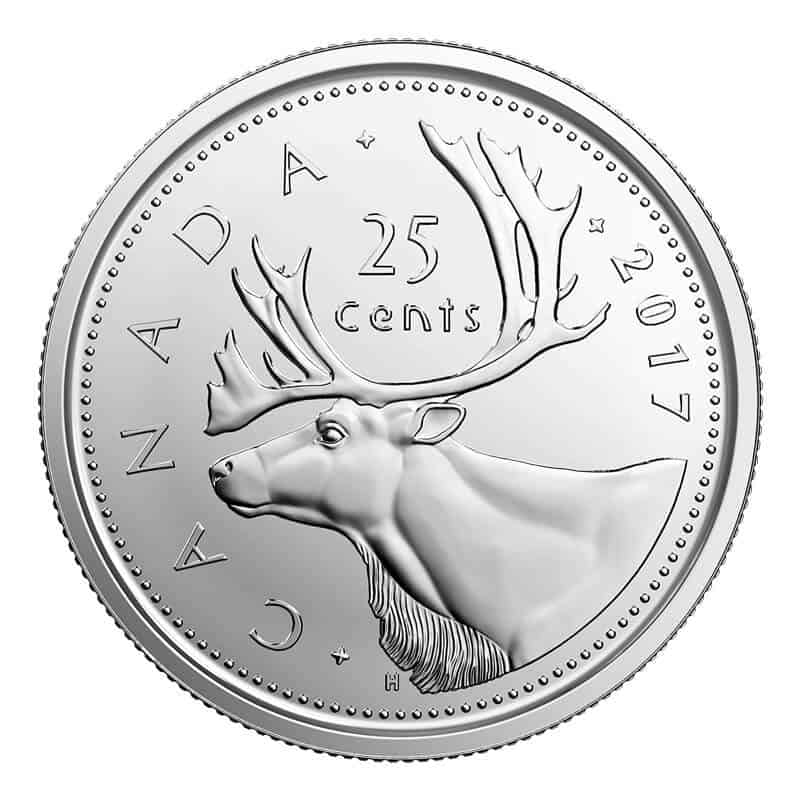
The Canadian quarter, maybe one of the most popular Canadian coins, why?
Duh, the $.25 candy machines.
There is nothing worse than being in front of one of these machines thinking you have a quarter in your pocket, only to mistake it for a nickel.
The Canadian quarter is made with 94.0% steel, 3.8% copper, 2.2% nickel plating.
Historical Composition Chart of the Canadian Quarter
| Years | Composition |
| 2000–present | 94.0% steel, 3.8% copper, 2.2% nickel plating |
| 1968–1999 | 99.9% nickel |
| 1967–1968 | 50% silver, 50% copper |
| 1953–1967 | 80% silver, 20% copper |
| 1920–1952 | 80% silver, 20% copper |
| 1910–1919 | 92.5% silver, 7.5% copper |
| 1908–1910 | 92.5% silver, 7.5% copper |
Loonie ($1 CAD)

The loonie was introduced to Canada in 1987, so it’s really just a young buck! (Pun intended!)
But nonetheless, loonies are known for their unique commemorative editions. No need to remember important Canadians anniversaries, just look at your loonies.
Since 2012, loonies have been made with multi-ply brass plated steel.
Historical Composition of the Canadian Loonie
Prior to 2012, the loonie was made with 91.5% nickel and 8.5% bronze plating.
Toonie ($2 CAD)
The Canadian toonie, what a coin.
Introduced in 1996, the toonie was named to represent the fact it is worth two loonies, which is why it is sometimes misspelled as “twoonie”.
Currently, the Canadian toonie is made with aluminum bronze coated with multi-ply plated brass, and the outer ring is composed of multi-play plated nickel with steel coating.
Outer Ring

steel,
nickel plating
Inner Core
aluminum bronze,
brass plating
Historical Composition of the Canadian Toonie
Prior to 2012, the toonie was made with 99% nickel as the outer ring. The inner core was made with aluminium bronze composed of 92% copper, 6% aluminum and 2% nickel.
Canadian Paper Money
The denominations of Canadian paper money are – $5, $10, $20, $50, and $100
Prior to 2011, Canadian paper money was made with cotton.
However, in 2011, to improve security and protect against counterfeiting, Canada started producing its paper money with a material called polymer.
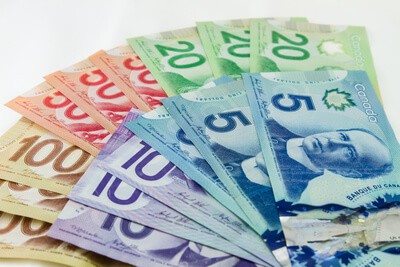
According to the Bank of Canada, polymer is 2.5 times more durable than the previous cotton-paper notes which saves the government money in “processing and replacement costs”.
Furthermore, the new polymer banks notes are better for the environment as they are recyclable.
For more information about Canada’s polymer bank notes, check out this document by the Bank of Canada.
Conclusion
There you have it folks. Please feel free to use this article as a reference whenever you need.
Whether you’re an American citizen or a Canadian citizen, coins are fascinating pieces of history that help us remember the people and things that came before us – oh, and they help us buy things.
Quick Note #1 – While I don’t go into detail on speciality coins in this article, it is possible some of these coins are composed of slightly different elements than what was standard at the time.
To see a composition summary of every coin listed above, refer to the tables shown at the beginning of the article.
I hope you learned a thing or two here today about what coins are made of. I certainly did while researching and writing about this topic.
Geek, out.

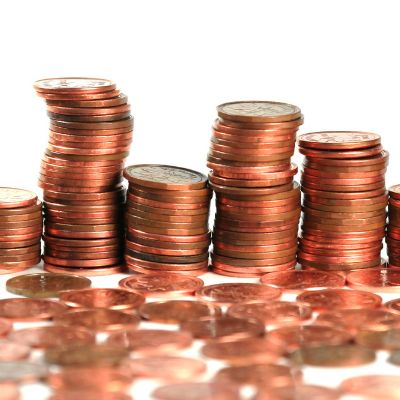
![Is It Illegal to Burn Money in the US? [Here are the Facts]](https://thefinancialgeek.com/wp-content/uploads/2022/09/is-it-illegal-to-burn-money.jpg)
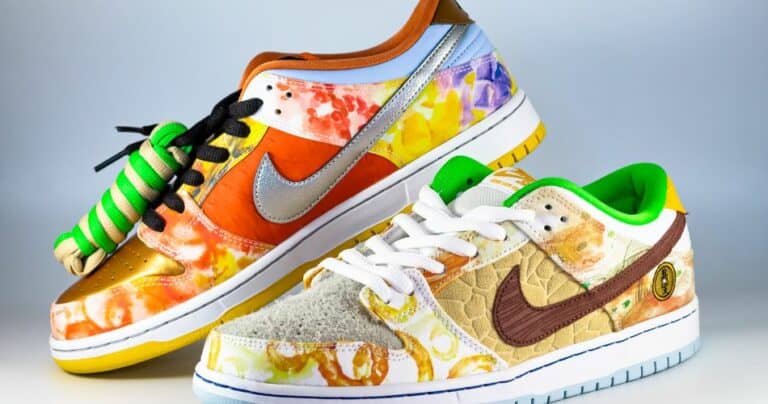

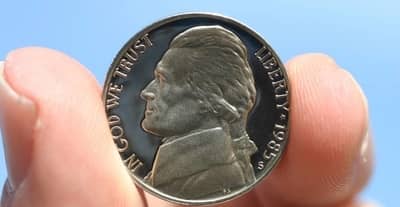
![Is Indeed Legit? [Here are the Facts]](https://thefinancialgeek.com/wp-content/uploads/2022/11/Featured-Image-47-768x404.jpg)